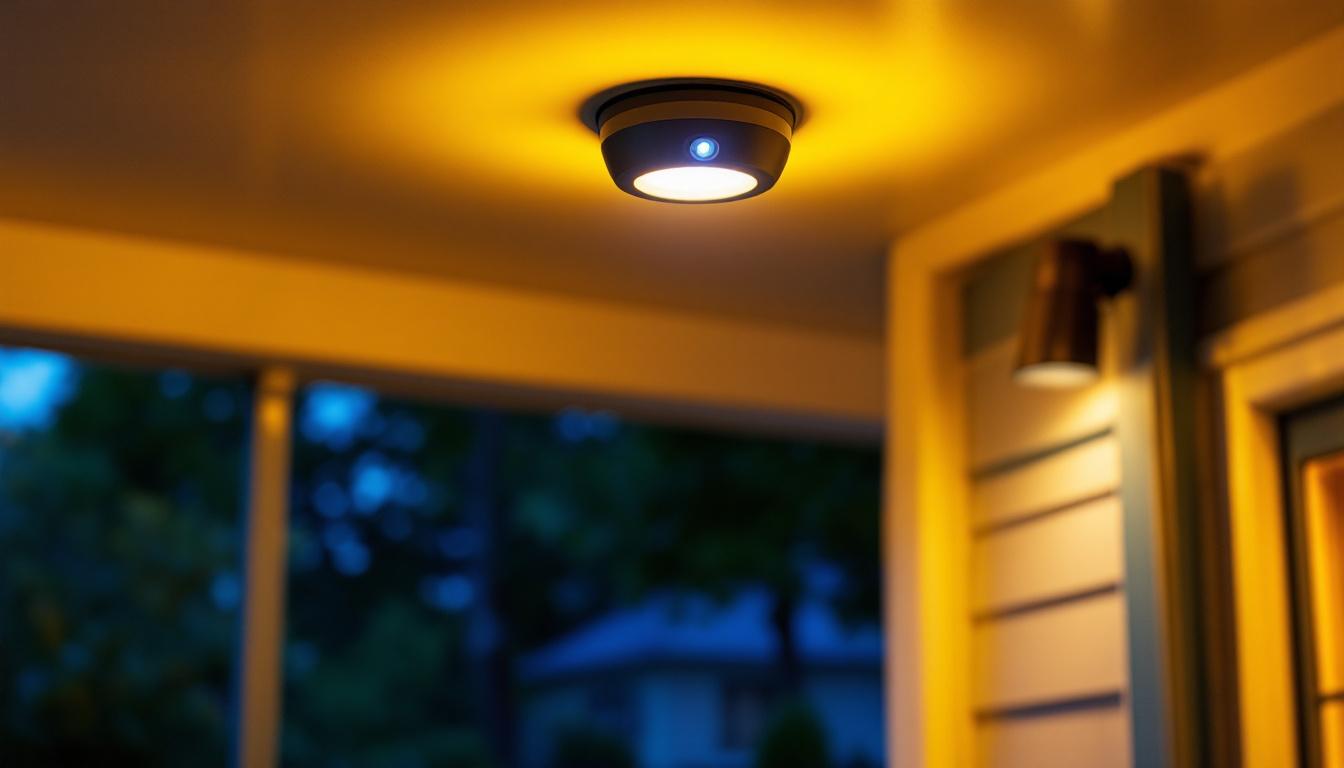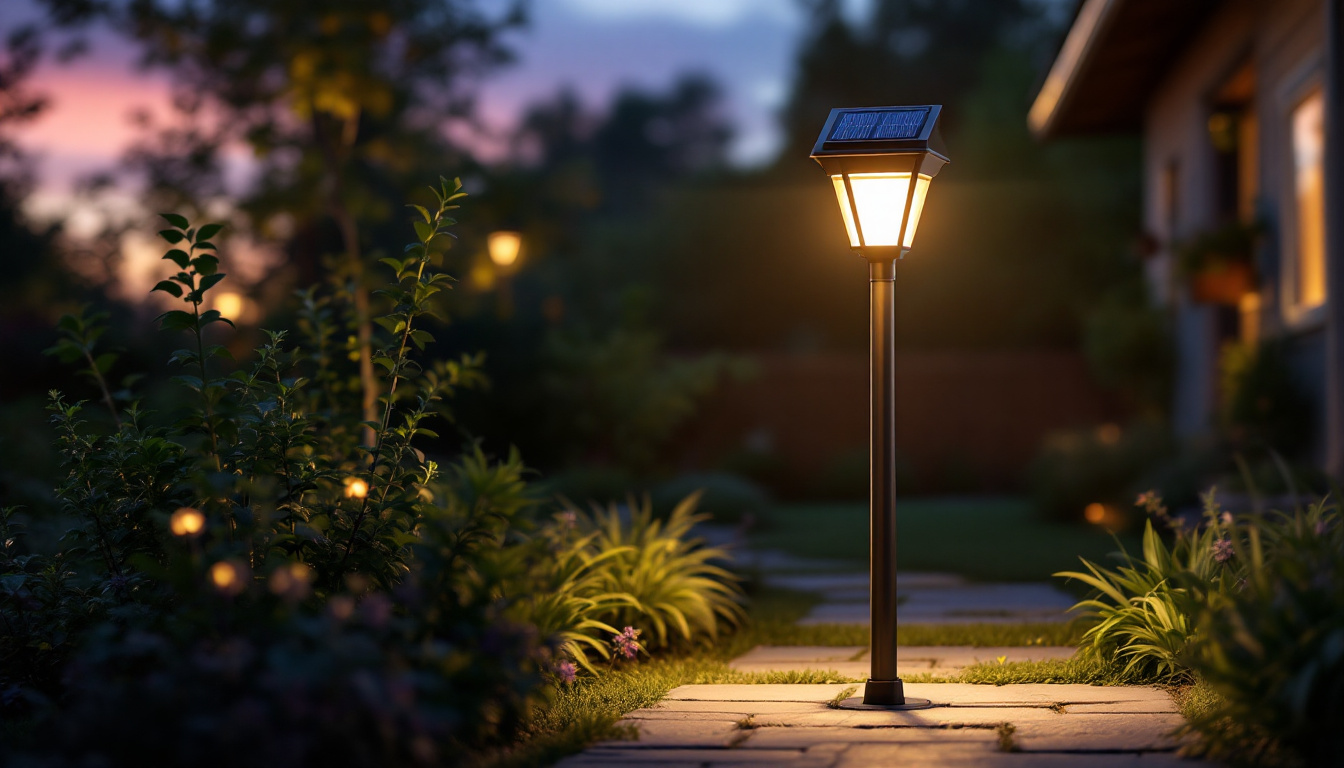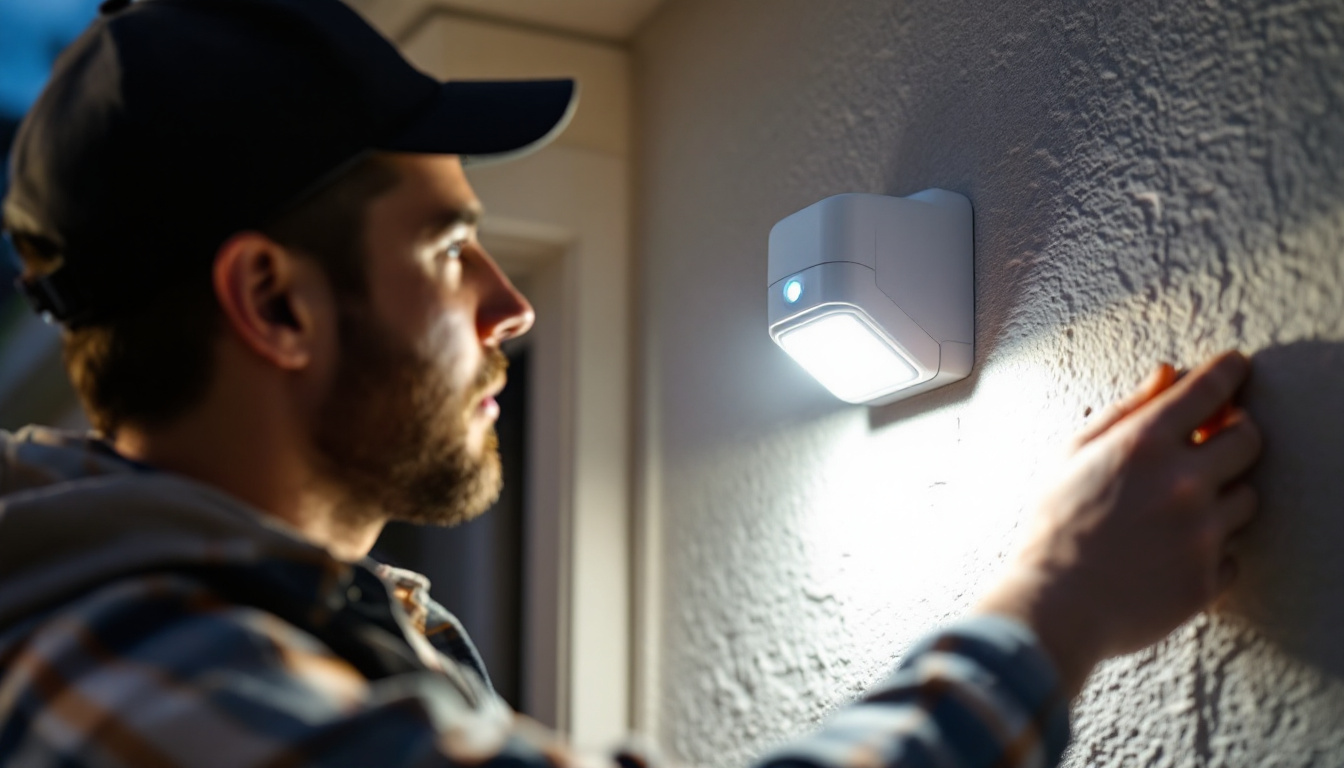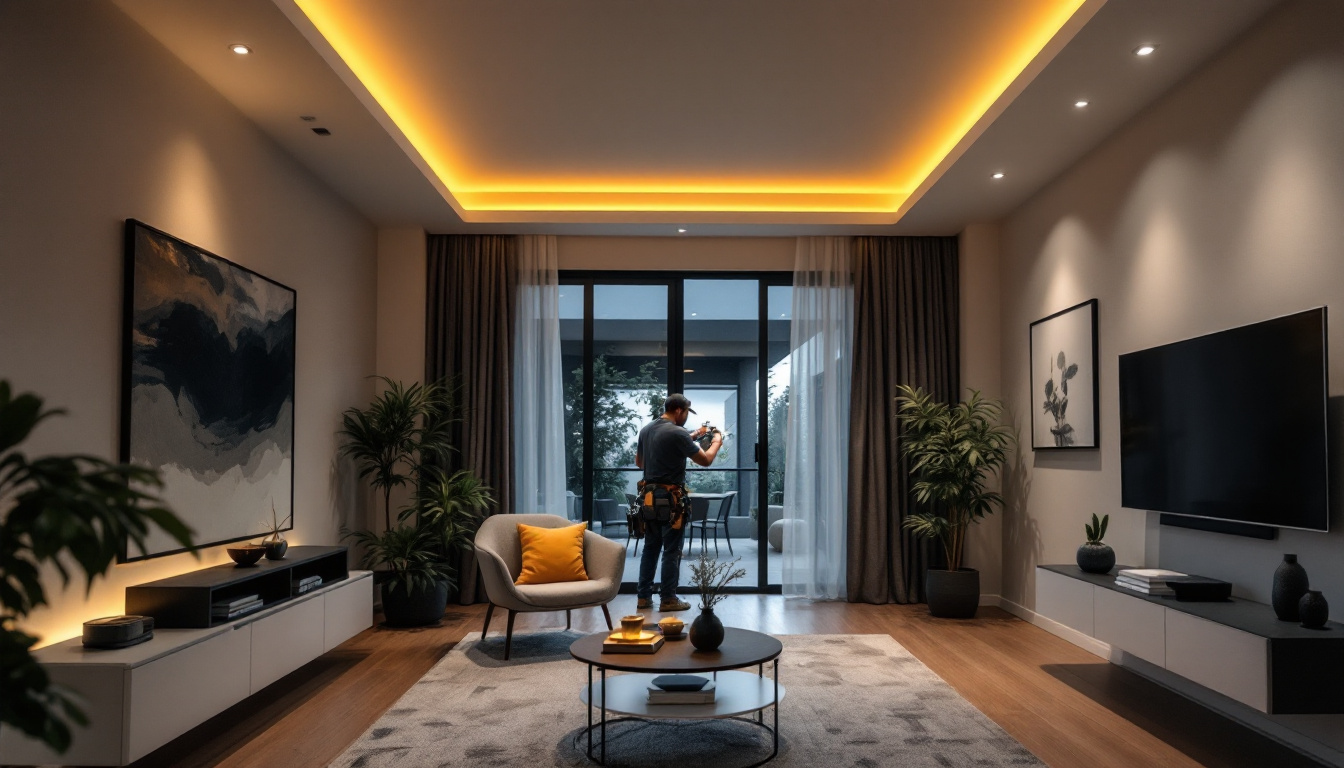
Motion detector porch ceiling lights have become a staple in residential and commercial lighting projects. These devices combine illumination with security, activating only when movement is detected. For lighting contractors, mastering the nuances of these fixtures is essential—not just for installation, but also for advising clients on the best solutions for their needs.
At their core, these lights consist of two main components: the light fixture itself and the motion sensor. The sensor detects infrared radiation emitted by moving objects, usually people or animals, triggering the light to turn on. This simple interaction reduces energy consumption and enhances safety by illuminating dark entryways only when necessary.
Beyond their basic functionality, motion detector lights come with various features that can cater to different environments and user preferences. For instance, some models offer adjustable sensitivity settings, allowing homeowners to fine-tune how easily the sensor is triggered. This can be particularly useful in areas with heavy foot traffic, where false alarms from passing cars or animals might be a concern. Additionally, many modern motion detector lights are equipped with timers, enabling users to set how long the light stays on after activation, which can further conserve energy and provide customizable lighting solutions.
Moreover, the technology behind motion detectors has evolved significantly, with advancements such as dual-technology sensors that combine passive infrared (PIR) and microwave detection. This dual approach enhances accuracy, minimizing the chances of false triggers while ensuring that the light activates even in challenging conditions, such as windy weather or when the motion is slow. As a result, lighting contractors can offer clients a range of options tailored to their specific needs, ensuring that every porch or entryway is both well-lit and secure.
Lighting contractors should be familiar with the different sensor technologies integrated into porch ceiling lights. Passive Infrared (PIR) sensors are the most common; they detect heat signatures and are highly reliable for outdoor applications. Ultrasonic sensors, which emit sound waves and measure their reflection, are less common but useful in certain environments where heat detection might be less effective. These sensors can be particularly advantageous in areas with fluctuating temperatures or where animals frequently pass through, as they can detect motion without relying solely on heat.
Some advanced models combine PIR and ultrasonic technologies, offering improved accuracy and fewer false triggers. Understanding these options allows contractors to select the right sensor type based on the installation environment and client requirements. Furthermore, it’s essential to consider the placement of these sensors, as factors like obstructions, angles, and the proximity to heat sources can significantly impact their performance. A well-placed sensor can enhance security and ensure the lighting system operates efficiently.
Modern motion detector lights come with adjustable settings for sensitivity, detection range, and light duration. Sensitivity controls help prevent unwanted activations caused by small animals or passing vehicles. Detection range adjustments ensure the light covers the desired area without triggering unnecessarily. This is particularly important in residential areas where excessive lighting can be intrusive to neighbors or disrupt the natural ambiance of the surroundings.
Light duration settings allow the fixture to remain illuminated for a set period after motion is detected, typically ranging from a few seconds to several minutes. Contractors should guide clients in balancing security needs with energy efficiency when configuring these settings. Additionally, some systems offer smart technology integration, allowing users to customize these parameters remotely via smartphone apps. This feature enhances user convenience and provides a modern touch that can appeal to tech-savvy homeowners.
LED technology dominates the market for porch ceiling lights due to its energy efficiency, longevity, and brightness. LEDs also offer a variety of color temperatures, from warm white to daylight, enabling customization based on the aesthetic and functional needs of the space. The choice of color temperature can significantly influence the atmosphere of an outdoor area; for instance, warmer tones can create a cozy and inviting environment, while cooler tones can enhance visibility and security.
Some fixtures incorporate dimming capabilities or multiple brightness levels, which can be particularly useful in residential settings where harsh lighting might be undesirable. Contractors should consider the client’s preferences and the overall lighting design when selecting the light source. Moreover, the integration of smart lighting systems can allow for automated adjustments based on the time of day or occupancy, providing both convenience and energy savings. As outdoor lighting continues to evolve, staying informed about the latest advancements in LED technology and smart features will empower contractors to deliver innovative solutions that meet diverse client needs.
Proper placement of motion detector porch ceiling lights is critical for optimal performance. Contractors should conduct a thorough site assessment, identifying potential obstructions, traffic patterns, and environmental factors such as nearby heat sources or reflective surfaces that could interfere with sensor accuracy. This initial evaluation not only aids in the effective placement of fixtures but also helps in understanding the unique characteristics of the property, which can influence the choice of lighting solutions.
Mounting the fixture at the recommended height—typically between 6 to 10 feet—ensures the sensor covers the intended detection zone without blind spots. Positioning the sensor to face the main approach path maximizes its effectiveness in detecting movement. Additionally, considering the angle of the sensor is crucial; a slight tilt can enhance its range and responsiveness. Contractors might also want to account for seasonal changes, as foliage growth in warmer months can obstruct sensors, necessitating adjustments or alternative placements to maintain functionality throughout the year.
Motion detector lights usually require a standard electrical connection, but contractors must verify compatibility with existing wiring and power sources. Many models operate on 120V circuits, but low-voltage options are available for specialized applications. Understanding the power requirements and limitations of the chosen fixtures is essential to avoid overloading circuits, which can lead to performance issues or safety hazards.
Ensuring proper grounding and adherence to local electrical codes is non-negotiable. Additionally, contractors should test the light’s operation after installation to confirm the sensor activates as expected and that the light duration and sensitivity settings are appropriate. It’s also advisable to educate homeowners on how to adjust these settings, as they may wish to fine-tune the sensitivity based on their specific needs, such as increased activity during holidays or reduced sensitivity during quiet periods.
Porch ceiling lights are exposed to the elements, so selecting fixtures with appropriate weatherproof ratings is essential. Look for products rated at least IP44, which protects against splashing water and solid objects larger than 1mm. Higher ratings like IP65 offer protection against jets of water, ideal for harsher climates. Furthermore, contractors should consider the impact of UV exposure on the longevity of materials; fixtures that fade or degrade quickly can lead to increased replacement costs and dissatisfaction from clients.
Materials also matter. Fixtures made from corrosion-resistant metals or durable plastics will withstand outdoor conditions better, reducing maintenance and replacement costs over time. Additionally, incorporating features like tempered glass or impact-resistant lenses can further enhance durability, ensuring that the lights remain functional and aesthetically pleasing despite the rigors of outdoor exposure. Contractors should also advise clients on periodic maintenance checks to clean lenses and ensure that the sensors remain unobstructed, thereby prolonging the life and effectiveness of the lighting system.
One of the most frequent issues contractors encounter is false triggering, where the light activates without a clear cause. This can stem from nearby heat sources, such as HVAC units, reflective surfaces that confuse the sensor, or even small animals passing by.
To mitigate this, adjust the sensor’s sensitivity and detection angle. Installing physical barriers or repositioning the sensor away from problematic areas can also help. Educating clients on these factors prevents unnecessary service calls and improves satisfaction.
If the motion detector fails to activate the light, the problem may lie in sensor alignment, wiring faults, or environmental conditions like extreme temperatures. Contractors should verify that the sensor is unobstructed and correctly oriented toward the expected traffic path.
Testing the wiring connections and replacing faulty components are standard troubleshooting steps. In some cases, upgrading to a sensor with a wider detection range or enhanced sensitivity may be necessary.
Flickering lights or fixtures that remain on continuously can indicate electrical issues or sensor malfunctions. Loose wiring, incompatible dimmers, or voltage fluctuations are common culprits.
Contractors should inspect all connections, ensure the fixture is compatible with any existing dimming systems, and check the power supply stability. Replacing the sensor or the entire fixture might be required if the problem persists.
Motion detector porch ceiling lights offer significant advantages beyond simple illumination. For homeowners, these fixtures provide peace of mind by deterring intruders and increasing visibility during nighttime hours. For businesses, they contribute to safety compliance and reduce liability risks.
From an energy perspective, these lights reduce electricity consumption by operating only when needed. This can translate into noticeable savings on utility bills, especially when combined with LED technology. Lighting contractors should emphasize these benefits when discussing options with clients, tailoring recommendations to their security concerns and budget.
Smart technology integration is transforming motion detector porch ceiling lights. Many modern fixtures now offer Wi-Fi connectivity, allowing users to control settings remotely via smartphone apps. Features such as customizable schedules, real-time alerts, and integration with home automation systems enhance convenience and security.
Additionally, advances in sensor technology are improving detection accuracy and reducing false alarms. Some systems incorporate artificial intelligence to differentiate between humans, pets, and vehicles, providing more precise control over lighting activation.
For lighting contractors, staying informed about these innovations ensures they can offer cutting-edge solutions that meet evolving client expectations.
Motion detector porch ceiling lights are a versatile and valuable addition to any lighting project. Success hinges on understanding sensor types, installation best practices, and common troubleshooting scenarios. Selecting the right fixture involves balancing client needs for security, energy efficiency, and aesthetics.
Contractors who master these elements not only enhance their technical expertise but also build trust with clients by delivering reliable, effective lighting solutions. Keeping abreast of technological advancements ensures that recommendations remain relevant and competitive in a dynamic market.
Ready to elevate your lighting projects with the latest motion detector porch ceiling lights? Look no further than LumenWholesale for the highest quality, spec-grade lighting solutions. With our unbeatable wholesale prices and commitment to cutting out the middleman, you can trust that you’re getting the best value for your investment. Our extensive selection is designed to meet the highest industry standards, ensuring reliability and high performance for every installation. Plus, with free shipping on bulk orders, you can stock up on premium lighting without worrying about hidden fees or compromises. Don’t miss out on the perfect blend of quality, affordability, and convenience. Visit LumenWholesale now and discover the best in wholesale lighting at the best value.

Discover why lighting contractors should prioritize solar post lights in their projects.

Discover why lighting contractors should prioritize motion sensor technology in their projects.

Discover essential tips and common pitfalls for lighting contractors working with LED ballasts.

Discover how incorporating flush mount can lights into your projects can elevate your lighting business.